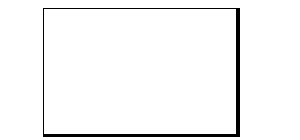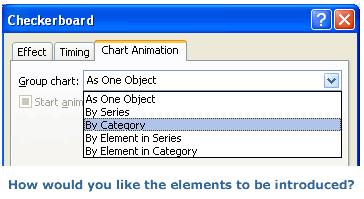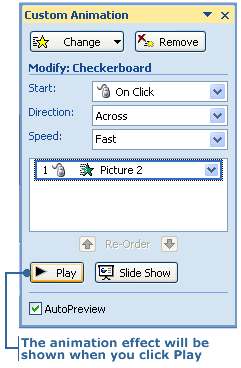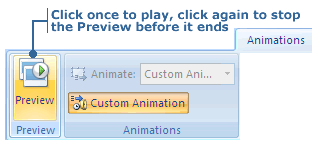![]()
|
|
|
|
|

|
|
|
|
|
|
|
|
|
|
|
![]()
|
|
The following steps will show you how to animate a cartoon image while working in Slide View.
2. On the slide, click the cartoon image to select it.
3. From the Animations Group in the Animations tab, click on the Custom Animation button. The Custom Animation task pane will appear.





|
|
|
|
|
|
|
|
![]()
|
|
2. From the Animations Group in the Animations tab, click on the Custom Animation button. The Custom Animation task pane will appear. Click the Add Effect button, select Entrance, then select More Effects. 3. The Add Entrance Effect dialog box will appear. Scroll down the list and click Color Typewriter. Then click OK.



|
|
|
|

|
|
|
|
|
|
|
|
|
|
|
![]()
|
|
Try animating a chart so that the elements of the chart are introduced onscreen by category.
2. From the Animations Group in the Animations tab, click on the Custom Animation button. The Custom Animation task pane will appear.



|
|
|
|
|
|
|
|
![]()
|
|
2. From the Custom Animation task pane, click the animation effect you want to edit. Now drag the animation effect to the position you want it to appear.

|
|
|
|
|
![]()
|
|
2. From the Animations Group in the Animations tab, click on the Custom Animation button.

The Custom Animation task pane will appear. Click the Play button to see a preview.

Alternatively, in the Animations tab, click on the Preview button in the Preview Group. You will see the animation effect that has been applied to the selected slide as well as any transition effects.

|
![]()
|
|

|